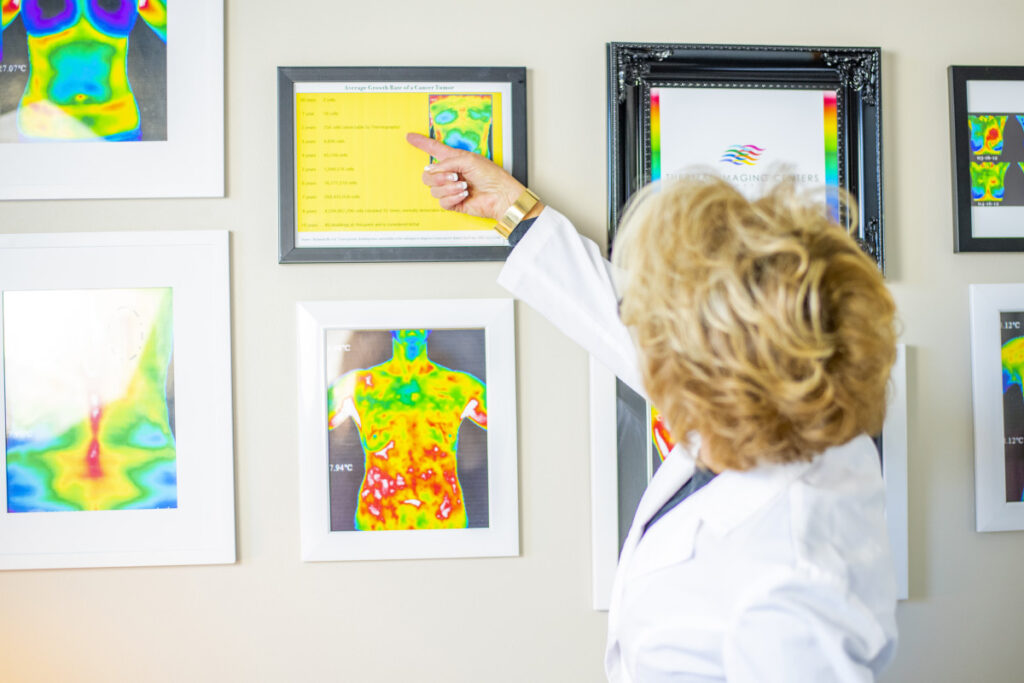
About Thermography
What is Thermography?
Thermography measures temperature variations using sophisticated and sensitive high tech equipment. These changes in the body’s temperature can indicate disease processes which can be used to indicate abnormalities in wellness long before the body’s own sensory organs can identify them. Thermography can be used to diagnose breast cancer, thyroid disease, inflammation, heart disease, and many other diseases.

Learn More
How Does it Work?
Thermography assesses blood flow patterns, inflammation and function using very sensitive equipment. It is a non-invasive, non-contact system of recording body temperature by measuring infrared radiation emitted by the body surface. It is a passive, pain free, fast, low cost and sensitive method.
Measuring Success
How Effective is Thermography vs Other Methods of Detection?
A thermogram has some advantages over a mammogram and an ultrasound, including the ability to detect physiologic changes in a cancer while it’s still in the cellular phase-sometimes years before it is detectable mammographically or thru an ultrasound.
Thermography can also detect lymphatic congestion and hormonal imbalances as well as monitor dietary changes. It can assess breast cancer risk, which is also something mammography and ultrasound technology cannot do.

Further Knowledge
Thermography FAQs
Thermography’s detection capabilities are not limited to cancer; thermography can detect other diseases and health conditions, including diabetes, hormonal imbalances, cardiovascular disease, digestive disorders, thyroid and metabolic disorders, and musculoskeletal problems (e.g., TMJ, spinal disc injuries).
Thermography has proven itself to be a less invasive alternative to mammography. That said, thermography can have more costly upfront costs. There will be pros and cons, no matter which screening method you use. It comes down to whether the pros outweigh the cons for your wants and needs.
Pros of Thermography
– Safer than alternative methods
– Can be used as early detection
– Non-invasive and comfortable
– Can detect inflammation and abnormal metabolic activity
Cons of Thermography
– Higher upfront costs
– Provides limited data and may require further testing (Changes may be detected that need require further testing to diagnose)
– Not typically covered by medical insurance
– Eliminates the risks of radiation exposure
There have been several studies done on the success of thermography. Many of these find breast thermography to produce success rates of 90% or more. Likewise, thermography has better accuracy in identifying benign vs. malignant cases than mammography (thermography at 92.70%, and mammography being only 82.05%).
Yes, thermography can identify inflammation by detecting its cardinal symptoms of heat production and emissions. By using thermal imaging, you can detect the early stages of inflammation without the use of radiation-exposing techniques such as mammograms.
Yes, thermography was approved by the Food and Drug Administration (FDA) in 1982 for use in evaluating breast tumors. That said, it’s an adjunctive tool, which means it should be used alongside a primary screening test and not as a standalone diagnostic tool.
